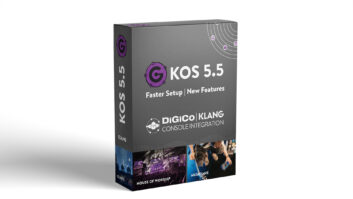San Francisco — Consumer electronics sales for the holiday season should be up 5 percent in manufacturers’ shipments this year, down from last year’s 14-percent spike, according to CEA’s Holiday Sales and Forecasts report, released here this morning during the annual Industry Forum.
The annual survey, presented by CEA industry analysis director Sean Wargo, is based on a random access telephone survey of 1,000 U.S. adults during early October 2004 and focuses on CE gift giving intent. (For CEA, the holiday season begins in September and ends in November, since manufacturer shipments after November wouldn’t have an effect on late year sales.)
Wargo calls the 5-percent prediction “reasonable” and “conservative” based on growth so far in a variety of categories. CEA predicts that overall annual manufacturer shipments of CE products will be $108.8 billion during 2004 vs. 2003’s $100.7 billion, an 8-percent gain, and the second straight time the industry has crossed the $100 billion level.
A variety of categories show hearty growth, Wargo said, “There is predominately good news out there. Clouds are hard to find.” For instance, the audio/video categories combined are up 11.8 percent in dollars and 6.9 percent in units. Audio alone has raised itself out of the doldrums, up 9.1 percent in units and 11 percent in dollars. Video alone is up 2.1 percent in units and 2.3 percent in dollars, which is understandable “given the high base number in 2003” due to HDTV and DVD.
Yet, he warned his audience of manufacturers and retailers, “Will everyone in this room benefit due to holiday sales growth? No. But it will be good for the industry.”
Wargo contends that in a time where “manufacturers have more competition, and they are changing, retailers are changing, the products and technology are changing, as are consumers wants and needs, some companies will grow, others won’t. But the overall health of the industry will be good.”
“The devil is in the details,” as the saying goes, so here are some specifics about what consumers are planning, what may affect their plans, and which categories should benefit:
·25 percent of consumers surveyed said they will spend more than 2003, slightly less than 2003’s 30 percent, with 22 percent saying they will spend less on holiday gifts, about 2 percent more than last season;
·“Mom and Dad” want during the holiday season in this order: peace and happiness, clothes, a computer, family together/money (a consumer concern never ranked before) and a car. “The kids” want the usual in this order: toys, video games, money, clothes and computers.
·What Wargo calls the “Adult CE Wish List” is as follows: plasma TV, digital camera, color TV 27-inches or larger, digital camcorder, home DVD player, home DVD recorder, HDTV, portable DVD, LCD TV, and color TV 27-inches or smaller.
There are slightly more CE consumers who will buy products as a gift this holiday season vs. last year, 76 percent to 71 percent. In addition Wargo said the survey showed “a broader depth of interest” in CE gifts this season, with 15 percent saying they will “likely” buy a product from the industry during the holidays vs. 12 percent last season.
Representing the largest “product” category in the survey, 81 percent of those consumers surveyed said they will buy a gift certificate as a gift. .Wargo said the result “stunned” him and the question will be “How much of that will translate into CE sales?” Well, January has been the second largest month for CE sales over the past few years at retail, with a big lift from all those gift certificates. Of retailers benefiting from gift certificates, mass merchants lead the pack with 49 percent. CE stores ranks fifth at 30 percent.
As a matter of historical record, Wargo highlighted the annual survey’s predictions vs. performance (in brackets) for the years 1999 through 2003: 1999, 7 percent (12 percent); 2000, 3 percent (5 percent); 2001, 4 percent (-7 percent); 2002, 3 percent (-9 percent); 2003, -2 percent (14 percent).
For additional CEA News see:













